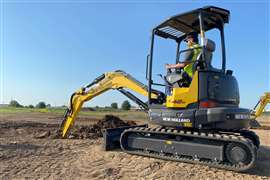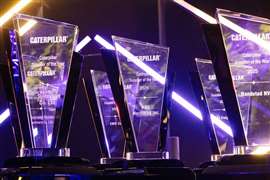Read this article in French German Italian Portuguese Spanish
Feadship launches ‘world’s first’ hydrogen fuel cell superyacht
07 June 2024
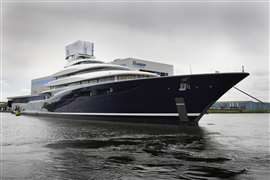 Project 821 takes to the water (Photo: Feadship)
Project 821 takes to the water (Photo: Feadship)
Feadship (the First Export Association of Dutch Shipbuilders), which is made up of three shipyards (Van Lent, De Vries and De Voogt Naval Architects), has launched what is described as ‘the world’s first hydrogen fuel cell superyacht’.
Known as Project 821, the new vessel was designed by UK-based RWD. According to information from Feadship, the five-year development and build process was driven by a single, fundamental question: “How far can we push green technology on superyachts?”
“The brief was to build the greenest and most environmentally advanced yacht ever built, without compromise. It was a huge challenge, but one that the team has embraced and delivered on,” said Jamie Edmiston, chief executive at Feadship.
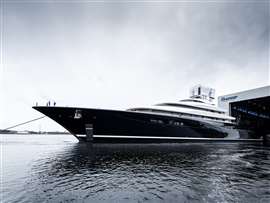 Unveiling of the Project 821 superyacht (Photo: Feadship)
Unveiling of the Project 821 superyacht (Photo: Feadship)
While there have been a variety of other applications using fuel cell technology, there were no regulations for systems onboard vessels of this type. As such, the partners behind the build had to develop appropriately scaled hardware, together with related protocols and safety regulations.
Case in point is storage of the hydrogen fuel. While hydrogen is far lighter than non-fossil diesel, weighing 70 kg rather than 800 kg per cubic metre, onboard storage required double-walled cryogenic storage tanks. This occupies between eight and 10 times the space needed to store diesel fuel.
The tanks on Project 821 are said to hold up to 92 cubic metres of hydrogen, weighing about four tonnes. Together with the sixteen fuel cell units, the space requirements for the power system, including DC electric grid and vent stacks, made it necessary to add four metres to the yacht’s original length. Total length of the superyacht is about 118.80 metres (approx.390 feet). The beam measurement is 19 metres (approx. 62 feet).
As even a vessel the size of Project 821 cannot carry sufficient hydrogen to fuel longer cruises, the system can also use methanol. This is reformed into hydrogen before being directed to the fuel cells.
Where hydrogen is not available, the yacht uses mtu generators from Rolls-Royce Power Systems to power the 3200 kW ABB pod drives. The engines are fuelled using HVO, a fuel system proven on Feadship’s Obsidian yacht, launched in 2023.
Electricity generated by the power systems is stored in 543 kW of onboard battery packs. This is a considerable number, but not as much as on previous ships. Launched in 2015, the 83.5-metre Savannah featured a diesel-electric power system using about 1 MW of battery storage capacity.
To further reduce draw on the hydrogen fuel cell system, Project 821 uses a waste heat recovery system to heat passenger cabins, together with the vessel’s pool, Jacuzzi and steam room. A ‘smart’ air conditioning system is linked to an energy management system which reduces air conditioning or heating in unoccupied areas.
Project 821 is now the largest motor yacht ever produced in The Netherlands. The superyacht has five decks above the waterline – the owner’s deck is 37 metres above the water. Luxury features include fourteen balcony units which can be retracted or opened at the touch of a button. Side railings open as the balcony units extend from the ship.
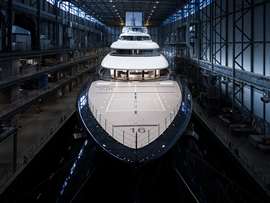 Project 821 prior to launch (Photo: Feadship)
Project 821 prior to launch (Photo: Feadship)
“We have now shown that cryogenic storage of liquified hydrogen in the interior of a superyacht is a viable solution,” said Jan-Bart Verkuyl, CEO of Feadship’s Royal Van Lent yard.
He continued: “Future innovations on fuel cells and onboard reforming of methanol to hydrogen are on the near horizon. For Feadship, the bottom line is that the decarbonization of Feadship’s upstream process such as our extensive use of aluminium produced in a more environmentally sensitive way and the production of net-zero carbon-free fuels or hydrogen carriers deserves utmost priority.”
Project 821 is now being offered for sale by Edminston. Price on asking.
POWER SOURCING GUIDE
The trusted reference and buyer’s guide for 83 years
The original “desktop search engine,” guiding nearly 10,000 users in more than 90 countries it is the primary reference for specifications and details on all the components that go into engine systems.
Visit Now
STAY CONNECTED




Receive the information you need when you need it through our world-leading magazines, newsletters and daily briefings.
CONNECT WITH THE TEAM












